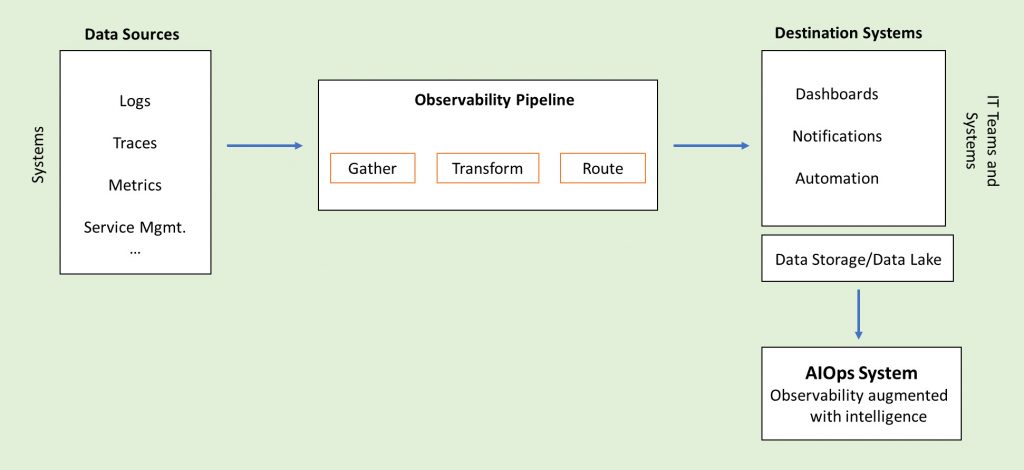
Listen to this blog
Why is container observability so important in today’s cloud native environments?
Today’s organizations have a plethora of modern development practices – like agile development, DevOps, microservices, containers, Kubernetes and serverless functions – at their disposal to achieve faster time to market. However, in the process, they’re deploying new application components with increased frequency, in so many places, and over widely varied periods of time. This calls for the need for a lot of higher-quality telemetry which can be used to craft a top-notch, context-rich, fully correlated record of every application request or transaction. This very purpose is served by Observability.
But before diving deeper into what observability is, let’s first understand what containers are and how they’ve become an essential part of any enterprise’s cloud transformation journey.
What are containers?
Containers in cloud computing can be termed as an executable unit of software in which application code is packaged, along with its libraries and dependencies, in common ways, so that it can be run anywhere from desktop, traditional IT infrastructure, or the cloud. They achieve this by taking advantage of a form of OS virtualization in which features of the OS are leveraged to isolate processes as well as control the amount of CPU, memory, and disk that those processes have access to.
Containers are proving to be one of the most promising catalysts to digital transformation – and with good measure. Gartner predicts that by 2022, more than 75% of global organizations will be running containerized applications in production. During the first three months of 2020, Netflix saw new subscriber numbers surge to 16 million. This emphasizes the need to prepare for unprecedented growth in demand, and the systems that can handle it.
Not only do containers provide a streamlined, secure and easy-to-deploy method to implement specific infrastructure requirements, they offer an alternative to virtual machines. Unlike a virtual machine, containers are small, fast and portable. They don’t need a guest OS in every instance, and instead, can simply leverage the features and resources of the host OS. A single server can host multiple containers because each container is small – often around tens of MBs in size – which results in considerable savings in hardware and maintenance costs.
Kubernetes: The de-facto way of containerization
While containers have become the standard cloud application development practice, Kubernetes has emerged as the standard for container orchestration. It allows container management by clusters in public, hybrid, and even multi-cloud environments. By making containerized applications increasingly easier to manage at scale, Kubernetes has become a major driver of the container revolution by automating processes such as deployment, management, networking and scaling.
Now that we’ve established an understanding on what containers are, let’s finally explore observability and its importance in today’s cloud native environments.
What is observability?
Observability in the realm of cloud refers to the software tools and practices used to aggregate, correlate and analyze a steady stream of performance data, from a distributed application and the hardware it runs on, to effectively monitor, troubleshoot and debug it to achieve the envisioned business objectives.
More than just a buzzword or a fancy name for application performance monitoring (APM), observability is, in fact, an evolution of APM data collection methods to better address the increasingly rapid and dynamic nature of cloud-native applications. It doesn’t replace monitoring – it enhances it.
How does observability work?
Observability platforms integrate with existing application and infrastructure instrumentation to continuously uncover and collect high-quality performance telemetry by focusing on:
- Logs – Time stamped, granular and comprehensive millisecond-by-millisecond records of application events which the developers can revisit for troubleshooting purposes.
- Metrics – Important measures of application and system health over a given period of time, such as memory used by an application over a particular span of minutes.
- Traces – Records of the end-to-end path of every user request from the UI through the entire distributed architecture and back to the user.
- Dependencies – Give a clear picture of how one application component is dependent on other components, applications and resources.
Once this telemetry data is collected, the platform then correlates it in real time to provide the SRE, DevOps and IT teams with complete contextual information into application performance
Observability is still an evolving yet fast-growing trend in modern distributed IT infrastructure monitoring. In fact, a recent report by LogicMonitor suggests that 93% of IT leaders acknowledge the role of IT observability as a foundation to run a successful modern enterprise in 2021. While organizations have different approaches at their disposal (cloud native, open source-driven, or enterprise solutions), a generic representation of an observability system looks like this:

The main benefit of observability is that it makes a system easier to monitor, safer to update and simpler to repair. It directly aids the Agile, DevOps and SRE teams to seamlessly and quickly deliver quality software. When combined with AIOps machine learning and automation capabilities, it can predict issues and resolve them without any human intervention.
Observability is designed to last
Observability is an evergreen area bound for growth over time as more ways of value creation surface. With nearly every company leveraging software technology in some form or the other to deliver products and services, IT environments are becoming increasingly complex. As complexities arise, more stuff needs to be monitored, and observability is how you keep your eye on the ball. Also, despite all the tools available, troubleshooting is very hard. Companies with better observable systems will have a better chance of scaling their business.
What’s important to note is that observability is expanding to different areas such as Applications, Data, DevOps, and Business Observability. The key is how information from all these systems is unified and used to drive ideal outcomes.
Learn the true value of observability and how to do it right
Observability has become the new paradigm in cloud native environments because of its ability to unearth actionable insights to improve application performance, boost productivity of SRE teams, and enhance user experience. Gartner forecasts that by 2024, 30% of enterprises implementing distributed system architectures will have adopted observability techniques to improve digital business service performance, up from less than 10% in 2020.
Observability does, however, come with few challenges in adoption, such as, complexity of telemetry data, adaptability to variations in cloud environments, abundance of open-source tools, and defining business cases.
Join our live webinar “Unravelling Container Observability” where our panel of experts will shed light upon how to do it right to overcome these and other challenges and ensure highly agile, secure and scalable systems for application development. Register Now to reserve your spot today.
Author
Rahul Jha





